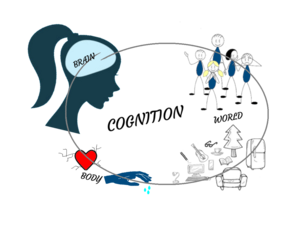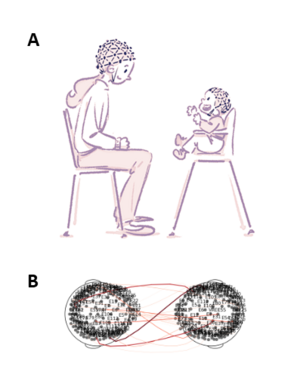Between-subjects mental representations
Self-awareness | Awareness of others

Our relationship with the world is based both on our individual construction, and on the relationships we maintain with others. In this line of research, the PSI team seeks to better understand these dynamics by studying the perceptual, cognitive and affective processes involved, from the understanding we have of ourselves and our bodies, to the complexity of multi-agent interactions in physiological and pathological contexts. Until recently, research has tested participants in isolation, whereas they are intrinsically integrated into social groups. Here, we propose to develop dedicated approaches to better address this reality.
Contacts
- Delphine Pins
- François Medjkane
- Pierre Thomas
- Arnaud Leroy
Key publications
Ongoing research projects

The development of well-adapted relationships relies on a set of key elements, combining facial recognition, emotion interpretation as well as cultural and social framework. Here, we propose to study these processes, from refined Lab conditions to more realistic situations, involving virtual reality and real interactions between individuals. Within this framework, we are interested in the feeling of familiarity one may have towards others and have sought to determine the sensory, cognitive and emotional components underlying it (Ameller et al., 2015, 2017 ; Horn et al., 2015, 2016). We are also interested in an essential mechanism that consists in spontaneously grouping people with whom we exchange into different social categories (age/gender, etc.), enabling us to adapt our own behavior (Strelnikov et al., pre-print). Finally, using virtual reality, we aim to understand how this categorization process influences social relationships.

Hyperscanning is a functional brain imaging method that allows simultaneous recordings in two participants engaged in an interaction. EEG is particularly well-suited for hyperscanning because of its ease and speed of use. In the team, we use this method to study dynamic interactions, such as the psychotherapeutic alliance or early mother-child interactions during mutual gaze situations (miniNO H2020 project, panel A). The ecological nature of hyperscanning protocols enables us to examine the reciprocal adjustment dynamics of the two participants during real-life interactions, and to measure their inter-brain synchrony (panel B). This work is being carried out in collaboration with the Precision Psychiatry and Social Physiology team (Montreal, QC, CA), thanks to a grant from the INSERM's precision psychiatry international network.

The team frequently uses the circular inference computational model (see also Axis 3), some applications of which have focused on the amplification of messages in complex networks. This work provides a theoretical framework to account for common brain dysconnectivity patterns observed in schizophrenia (Bouttier et al., 2022), but also for polarization and radicalization phenomena observed in social networks (Bouttier et al., 2024). The decorrelation of incoming messages in these complex graphs offers possible avenues for controlling the rigidification of beliefs and of misinformation online.

